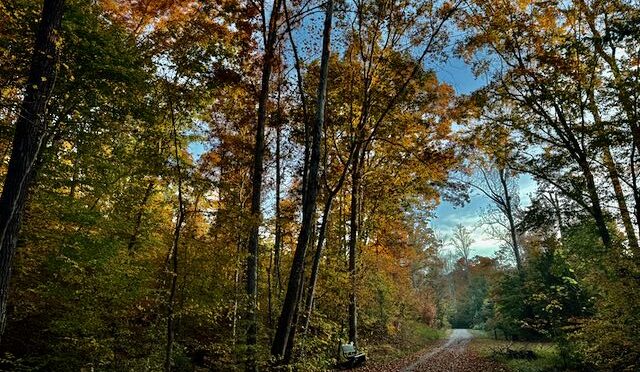There’s a lot of moaning this time of year about the absence of after work sunlight. In the summer, I can get in a 3-mile hike after work. Now it’s dark before I leave the salt mine.
It’s true that if you punch out at 5 this afternoon you’ll only have 3 minutes before sunset, and maybe 25 minutes of useable light total. It’s also true that the issue is less a matter of available sunlight, more a matter of not looking for it in the right place.
Like, in the morning.
For instance, this morning sunrise was at 7:03, and we started seeing light at 6:36 a.m. If you had your act together and could be at the trailhead at 7, you could probably get in those same 3 miles and still be to work by 9.
Why hike first thing?
In addition to the obvious Why not?, here’s why:
- You get to see sunrise. It’s like sunset, only in reverse.
- You get to hear the day come to life. Even on a cold morning, there’s a good deal of woodland chatter as the natural world wakes up.
- Start cool, end less cool. There’s something about knowing you’ll likely get warmer as the hike progresses that makes heading out at dawn less daunting.
- It gets your motor revved for the day. You know how some mornings it can be 10:30, 11 by the time you’re fully engaged? A brisk hike in brisk weather will get your juices flowing pronto (and you can tell your boss that!).
- It sets an upbeat tone for your day.
Tips for an early hike
A few quick things to keep in mind on an early hike.
- Check not only sunrise, but also the start of twilight. As we mentioned earlier, sunrise today was at 7:03 p.m., but twilight — first light — began at 6:36 a.m. Use sunrise as your ultimate guide for being on the trail, but keep in mind it will start getting light about 25 minutes before that. Unless …
- It’s cloudy. Thus, you’ll want to do the same thing you do for an evening hike: take a headlamp.
- Check the hours of the trail you’ll be hiking. Nearly all municipal and county parks have hours, ditto state parks and national parks, as well as land trust preserves. Some of them have nebulous “dawn-to-dusk” hours, most employ actual hours. Some have gates, some do not. National forests and game lands are about the only public lands that generally don’t have posted hours. Technically, you are trespassing if you are on a trail beyond its posted hours.
- Be content with a shorter hike. Odds are if you’re hitting the trail early it’s because you need to be somewhere in the morning — like work or school. Be realistic about your morning hike.
- Know your pace. Part of being realistic about how far you can hike is knowing how fast you hike. Let’s put that 8th grade algebra to the test: If it takes you 25 minutes to hike a mile and you need to be to be off the trail by 8 so you can get to work by 9, starting at sunrise, how far can you hike if you start at 6:50 a.m. (Answer: 3.)
- Eat breakfast first! It’s likely been at least 8 hours since you last ate. Even if you’re not a breakfast person, you need some fuel on board for the hike.
One last thought for those of you who still mope about not having sunlight after work. The winter solstice this year occurs on Dec. 21 (at 4:19 a.m. EST). That’s the day we have the least amount of sunlight (9 hours, 45 minutes, 39 seconds). However, through a quirk of astrosomething, the sun will actually start setting later beginning Dec. 6 (at 5:02:41 p.m. as opposed to 5:02:39 the day before). By Dec. 21 it will be setting 4 minutes and 11 seconds later, and come the last day of the year, sunset won’t be until 5:13:13 p.m.
You’ll be hiking after work again before you know it.
